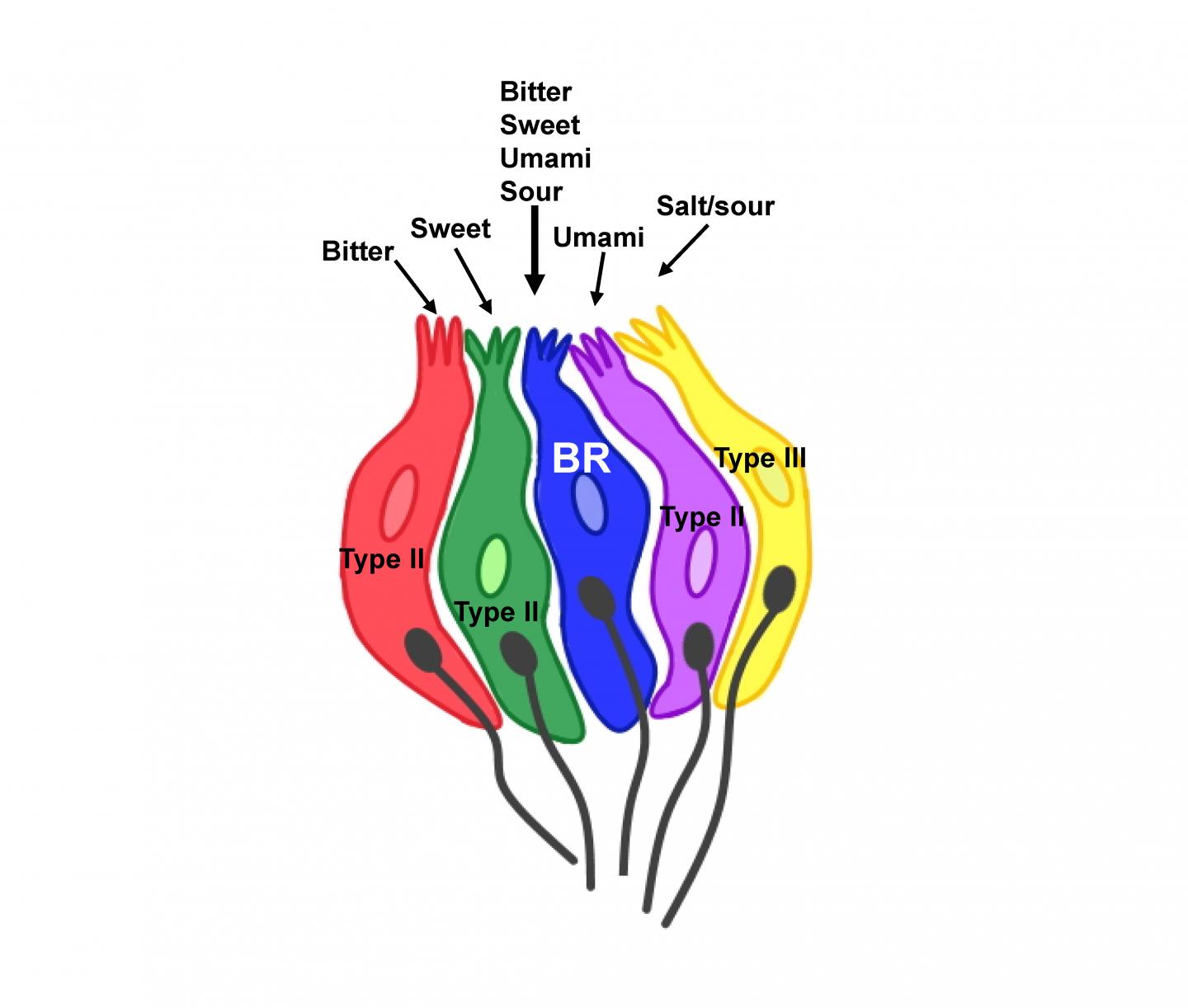Five taste sensations and just three types of taste cells make up the world of flavours - or so we thought. A new discovery indicates there could be more complexity to this equation than we first imagined.
Researchers working with rodents have identified a new population of taste cells, and they appear to have a greater appreciation of flavour than previously thought possible. Instead of being selective like other taste cells, this 'broadly responsive' cell can respond to every known taste except salt.
Taste cells are receptors that group together to form taste buds, shaped like tiny garlic bulbs, on the tongue. Some taste buds can also be found on the soft palate (the roof of a person's mouth), and at the back of the throat.
Taste cells can be ruthless, with good reason. If they sense some objectionable or potentially toxic taste, our taste buds tell us to reject and eject a mouthful of food. But taste something sweet, and they'll have us asking for more.
You probably know that five tastes have been delineated so far: sour, salt, bitter, sweet and savoury. But fat might be another, and possibly starch. Just like people argue over whether coriander is a godsend or tastes like soap, scientists are continuing to debate and investigate the different types of tastes and taste cells.
Type I taste cells represent about half the number of cells in taste buds. They can respond to saccharides and amino acids to produce sweet and umami flavour sensations (umami is the pleasant savoury taste associated with the amino acids in proteins and the food additive MSG). But their main job is to act as a support for other nearby nerve cells.
Type II cells can detect either bitter, sweet or umami taste sensations, while type III cells are similarly selective, but make up less than one fifth of taste cells in taste buds. They can detect either sour or salty tastes.
Now scientists from the University of Buffalo in New York have discovered and characterised a previously unknown subset of type III cells, isolated from transgenic mice.
These newly found cells are also sensitive to sour, but lack their usual knack for detecting salt. In its place, these broadly responsive type III cells use a unique signalling pathway to also detect bitter, umami, and sweet flavours.
"Our study describes a new population of taste cells that can detect multiple types of stimuli, including chemicals from different taste qualities," the authors explained in their paper.
 (Jhanna Flora and Kathryn Medler)
(Jhanna Flora and Kathryn Medler)
The versatility of this new population of taste cells mirrors nerve cells in the brain, where there are both generalist and more specialised neurons for processing incoming information about taste.
Though not every single cell tested could be stimulated by all tastes in the experiments, 100 percent of the 'broadly responsive' (BR) cells responded to more than one taste quality, and about 80 percent detected either three or four types of tastes.
"Having broadly tuned cells would allow the taste system to better discriminate between chemicals with similar characteristics," the authors said of their findings, which should apply more widely to other mammals that share the same taste systems.
Having identified and characterised the new taste cells, the next experiments were set up to see just how much taste actually relies on them. It involved testing taste-evoked behaviours of mice that had been engineered to live without a key component of the signalling pathway used by BR cells.
Both transgenic and wild type mice were presented with drinking tubes containing liquids laced with either MSG, to stimulate umami sensations, a sweetener, a bitter compound called denatonium, or salt. An aptly named instrument called a lickometer measured their response to each solution, compared to water.
The transgenic mice drunk the sweet, bitter, and umami liquids just like water; to them there was no difference in flavour until they reached the highest face-scrunching concentrations. Without the signalling pathway of BR cells, the mice had lost their sensation of these tastes.
"Even though the BR cells are only a subset of cells within the bud, our data suggest that these cells make a significant contribution to taste," the authors concluded.
Scientists had suspected their presence for a while after past research found that many receptor cells, sampled as intact taste buds from mice, responded to multiple taste qualities. But until now, no one had isolated and identified the multi-tasking taste cells responsible.
Once again, we have mice to thank for this latest discovery. Now, to design a lickometer for humans…
The research is published in PLOS Genetics.
